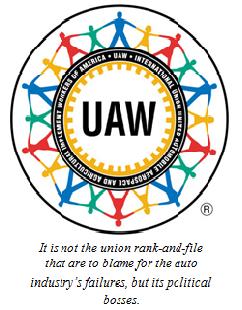By Paul Farago
As published at NetRightNation.com.

During these intervening 60 years organized labor officials undertook a massive investment in politics—with a particular focus on Congress and state legislatures, where no term limits enable powerful legal fiefdoms. Some would conclude that the union protection racket is a corrupt pay-to-play scheme. In any event, this successful arrogation of political power has enabled union officials and operatives to hold the line against change and reform.
The labor law firmament is constructed on a bold idea: Allow union officials powers ordinarily granted only to government itself. For example, collective bargaining agreements include an exclusive representation clause and provide for monopoly bargaining rights. That means that once a workplace is unionized, all other unions are generally disallowed from competing with the incumbent by offering workers a better service. Further, federal law provides that in a unionized workplace, the payment of union dues or equivalent fees is a precondition of employment. There is no worker choice, with only one exception. States may intervene and pass a worker-choice law. Twenty-two states have done so—mostly in the South—and today’s best-selling cars are made at companies who invested in those ‘right-to-work’ states.
Michigan is not one of those states. And with Detroit’s Big Three death watch running for many years, now reaching terminal stage with pleas to Congress for a mega-bailout, up comes the inevitable scrutiny of labor unionism in the U.S.
When critics take on the unions, when terms like ‘union thugs’ and ‘union goon squads’ are used, they are not talking about the average worker who happened into a unionized workplace. These rank-and-file union members are the victims. The Union Thug perps are the organized labor bigs—the fat-cats in union ‘management’ who prevent workers from having a choice and force them to pay tribute, who devote 3/4 of their budgets to political action, spending 99% of it on left-wing Democrats when about 40% of union members disagree, who use the force of law to keep their boot on the neck of workers and lawmakers alike.
It’s a poorly-kept secret that Big Three management and UAW bigs are really one and the same. They played in the sandbox together, attended elementary school together, golf at the same country clubs, vacation at the same luxury retreats, park their private jets in the same hangars, rip off the shareholders together, and so on.
Under the legal regime of the last 75 years, Big Business and Big Labor have become Big Bedfellows. They cannot function without one another. Thus, management must be replaced when the Big Three union contracts are voided by a Chapter 11 bankruptcy judge. The alternative is to continue to pour money down a rat hole. That’s probably what Congress will do for now—but eventually the death watch will end. Then states like Michigan and Ohio will have an obvious choice. Either pass laws that give workers a choice about union membership—or the factories will be shuttered forever and workers who want to re-join the industry will head South.
Paul Farago is a member of the NetRight Nation Writers’ Group.

